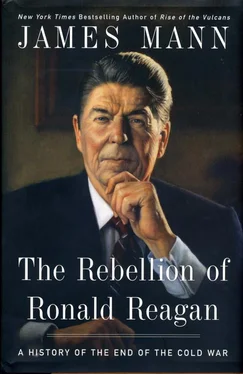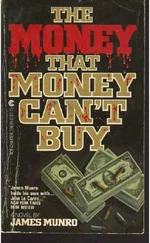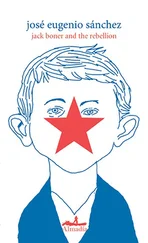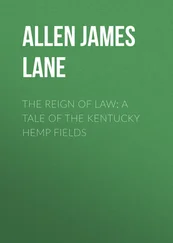In a speech at Moscow State University, Reagan put forward many of the same ideas about globalization that, a year earlier, his secretary of state had offered in private to Gorbachev. “Linked by a network of satellites and fiber-optic cables, one individual with a desktop computer and a telephone commands resources unavailable to the largest governments just a few years ago,” he said. “In the new economy, human invention increasingly makes physical resources obsolete.” Reagan went on to draw a connection between these global changes, on the one hand, and economic freedom and individual liberty on the other. “Freedom is the right to question and change the established way of doing things,” Reagan asserted. During a question-and-answer session, Reagan told the students he hoped they could look forward “to a day when there will be no more nuclear weapons in the world at all.” 14At the end, the students gave Reagan an ovation.
These events were staged, but they were not mere stunts. Through them, Reagan not only openly promoted political liberalization but also associated Gorbachev and his reforms with these ideals. The president was boosting the Soviet leader in the fashion that riled Reagan’s critics back in the United States. At the same time, his remarks encouraged hopes and expectations inside the Soviet Union that the country was on the verge of political change.
The large formal meetings between the American and Soviet delegations, headed by Reagan and Gorbachev, made little headway. During the Moscow summit, there were two plenary sessions in which each leader was accompanied by six to eight other top officials. Reagan was joined by aides such as Shultz, Powell, Defense Secretary Frank Carlucci, and White House chief of staff Howard Baker; Gorbachev’s side included Shevardnadze, Defense Minister Dmitri Yazov, former Foreign Minister Andrei Gromyko, and former ambassador Anatoly Dobrynin.
At the outset, the two leaders congratulated each other over the completion of the INF treaty. According to the declassified notes of this meeting, Reagan said he and his aides had “shed a lot of blood” to win approval for the treaty. Gorbachev joked that the 93-to-5 vote for Senate ratification was impressive, but “the Soviet side had done better—with 100 percent of the votes in favor.” 15
The two sides were still committed to completing the more sweeping START treaty covering strategic weapons during Reagan’s final six months in office. But at the summit, they repeated old arguments and did little to narrow their differences. At one awkward moment, Reagan, seeking to emphasize a point with a hand gesture, spilled a glass of water onto the table and apologized. “Never mind,” Gorbachev told him. “A careless move with a glass of water is no big deal. If it had happened with missiles....” 16
During the second of the two large meetings, Soviet officials brought up the proposed joint statement on “peaceful coexistence,” which Gorbachev had given to Reagan three days earlier. It would have committed both sides to a summit communiqué that said:
The two leaders believe that no problem in dispute can be resolved, nor should be resolved, by military means. They regard peaceful coexistence as a universal principle of international relations. Equality of all states, non-interference in internal affairs and freedom of socio-political choice must be recognized as the inalienable and mandatory standards of international relations. 17
Gorbachev pointed out that Reagan had not voiced any objections when the statement was first read to him, merely noting that his aides should study it. When the advisers saw the language, they were horrified. It may have seemed on the surface to be an anodyne commitment to avoid the use of force, but the statement contained a series of words and phrases with a long history and hidden political content. “Peaceful coexistence” was a phrase that Soviet officials had used since the 1920s to describe the relationship they envisioned between the socialist and capitalist systems. In the Soviet lexicon, the terminology did not cover relationships among the socialist countries themselves, such as, for example, the use of Soviet troops in Hungary or Czechoslovakia. Similarly, the vague phrase “freedom of socio-political choice” could have been interpreted as formal American acceptance of Soviet predominance in the Communist systems that had been imposed in Eastern Europe and the Baltic states.
“This was Cold War rhetoric that sent all kinds of signals, but if you weren’t steeped in the lore, you wouldn’t recognize it,” said Carlucci. 18To make matters worse, Reagan’s aides noted that after the Nixon administration went along with comparable language as part of the process of détente; the Soviet Union felt no compunction about sending its troops into Afghanistan.
Assistant Secretary of State Rozanne Ridgway, who was in charge of negotiating the formal postsummit statements with her Soviet counterpart, had rejected the language Gorbachev proposed. At the second meeting between the full Soviet and American delegations, however, Gorbachev revived the issue and pushed hard, concentrating directly on Reagan. He insisted that by saying once vaguely that he liked the sound of the statement, the American president had already given his assent. Ridgway passed a note to others in the American delegation, saying it was crucial to stop Gorbachev from obtaining Reagan’s approval. Shultz and Carlucci began to break into the discussion to voice their own objections.
As the officials of both governments looked on, Gorbachev appealed to Reagan to exercise his authority as president. “Should we record that the Americans would not agree to the paragraph because of George Shultz or Frank Carlucci?” Gorbachev asked. “Are they the intransigent parties?…. Perhaps Ambassador Matlock or Assistant Secretary Ridgway?” 19The president seemed to be wavering, eager to accommodate Gorbachev but unwilling to override his subordinates. “Reagan looked uncomfortable—which he was in improvised situations,” recalled Powell. 20
The president told Gorbachev he didn’t want to be “the skunk at the picnic.” Finally, Gorbachev suggested the two sides should take a break at which the American delegation could review the statement he had been urging upon Reagan. The Americans huddled together and Reagan’s aides repeated their objections. According to Powell, Reagan accepted their complaints with a “disappointed shrug.” He told Gorbachev, who briefly and angrily tried to argue further. “Gorbachev blew up. He had a temper,” said Carlucci. After a few moments, Gorbachev gave up and once again became amicable as the meeting ended.
Several of Reagan’s advisers felt that Gorbachev had mounted this campaign at the behest of traditionalist forces in the Communist Party leadership. Sitting alongside Gorbachev at these meetings were Gromyko and Dobrynin, veterans of Soviet-American diplomacy dating back to the earliest days of the Cold War. “We had the impression that this was showtime for Gorbachev,” recalled Ridgway. “If he could get American approval of ‘peaceful coexistence’ for all these guys sitting around him like Dobrynin, he would. And if not, he would show them that it wasn’t possible. This all came up, I’m convinced, only because Gorbachev was still struggling inside the Politburo with a lot of people who were skeptical of where things were heading.” 21
The episode represented an ironic reversal of roles between Reagan and his own foreign-policy team. The underlying issue was the recurrent one of how much the United States should accept the divisions of the Cold War. When it came to public rhetoric, such as Reagan’s call in Berlin for Gorbachev to “tear down this wall,” the president was willing to play the hawk, while Shultz, Powell, and Ridgway were much more cautious. But on matters of formal diplomatic language, such as a commitment to “peaceful coexistence,” they switched sides. Reagan was willing to try to placate Gorbachev, while his advisers became the hawks.
Читать дальше












